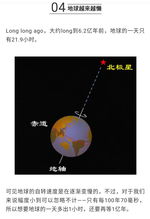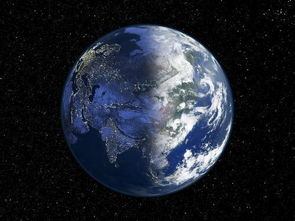
As

inhabitants of this little blue planet, we often look up at the stars in wonder and awe. But what about the mysteries that lie right beneath our feet? From bizarre geological formations to odd natural phenomena, the Earth is full of fascinating facts that may just surprise you. Here are some cool bits of Earth trivia to impress your friends with:
1. The Earth is not perfectly round. You may have heard that the Earth is an oblate spheroid, meaning that it bulges at the equator and flattens at the poles. But even this is an oversimplification. The Earth's shape is actually more like a pear, with a slightly larger bulge in the Southern Hemisphere than in the Northern Hemisphere.
2. There is a giant underground crystal cave in Mexico. The Naica Mine in Chihuahua, Mexico, is home to some of the largest natural crystals ever found on Earth. The crystals, which are made of gypsum, can be up to 36 feet long and weigh up to 55 tons. The cave is so hot and humid that visitors can only stay for short periods of time, and must wear special suits to protect themselves.
3. The world's largest salt flat is in Bolivia. The Salar de Uyuni is a stunning landscape of white salt and blue sky that stretches over 4,000 square miles. It's also one of the flattest places on Earth, with variations in elevation of less than one meter over its entire area.
4. There is a lake in Tanzania that turns animals to stone. Lake Natron is a highly alkaline lake that has a pH of around 105, which is more caustic than ammonia. The lake's high levels of sodium bicarbonate and other minerals can calcify the bodies of animals that die in its waters, turning them into statuesque, stone-like figures.
5. Earth has a second moon. Sort of. The tiny asteroid 2020 CD3 was discovered in February 2020 and is temporarily orbiting the Earth. It's only a few feet across, so it's not visible to the naked eye, but it's still a fascinating reminder of the countless space objects that are always passing by our planet.
6. The Earth has more than one magnetic field. You're probably aware that the Earth has a magnetic field that helps protect us from the harmful effects of the solar wind. But did you know that there are also smaller, localized magnetic fields that exist within the Earth's crust? These fields can be influenced by geological features like mountains and canyons.
7. The deepest point in the ocean is deeper than Mount Everest is tall. The Mariana Trench, located in the western Pacific Ocean, has a depth of over 36,000 feet. To put that in perspective, Mount Everest stands at just over 29,000 feet. The trench is home to a variety of extreme life forms, like giant tube worms and deep-sea bacteria.
8. Earth has a natural hum. Scientists have discovered that the Earth emits a low-frequency hum that is too low for humans to hear. This hum, which is caused by the planet's natural vibrations, has a frequency of around 7.83 Hz and is sometimes referred to as the "Schumann resonance."
9. The heaviest object ever moved by humans is a rock in California. The "Rock" was moved by Southern California's Riverside County transportation department and weighs over 300 tons. It was moved over the course of 11 nights in 2018 to make way for a widening of a highway.
10 The Earth is not the only planet with auroras. While the auroras on Earth are caused by interactions between the planet's magnetic field and charged particles from the sun, similar phenomena have been observed on other planets in our solar system, like Jupiter and Saturn.
From giant crystals to stone animals, the Earth never fails to surprise us with its weird and wonderful wonders. So next time you gaze up at the stars, remember to take a moment to appreciate the complexities and mysteries that lie just beneath your feet.